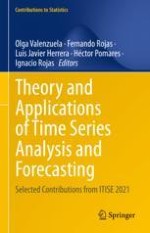This book presents a selection of peer-reviewed contributions on the latest developments in time series analysis and forecasting, presented at the 7th International Conference on Time Series and Forecasting, ITISE 2021, held in Gran Canaria, Spain, July 19-21, 2021. It is divided into four parts. The first part addresses general modern methods and theoretical aspects of time series analysis and forecasting, while the remaining three parts focus on forecasting methods in econometrics, time series forecasting and prediction, and numerous other real-world applications. Covering a broad range of topics, the book will give readers a modern perspective on the subject.
The ITISE conference series provides a forum for scientists, engineers, educators and students to discuss the latest advances and implementations in the foundations, theory, models and applications of time series analysis and forecasting. It focuses on interdisciplinary research encompassing computer science, mathematics, statistics and econometrics.
